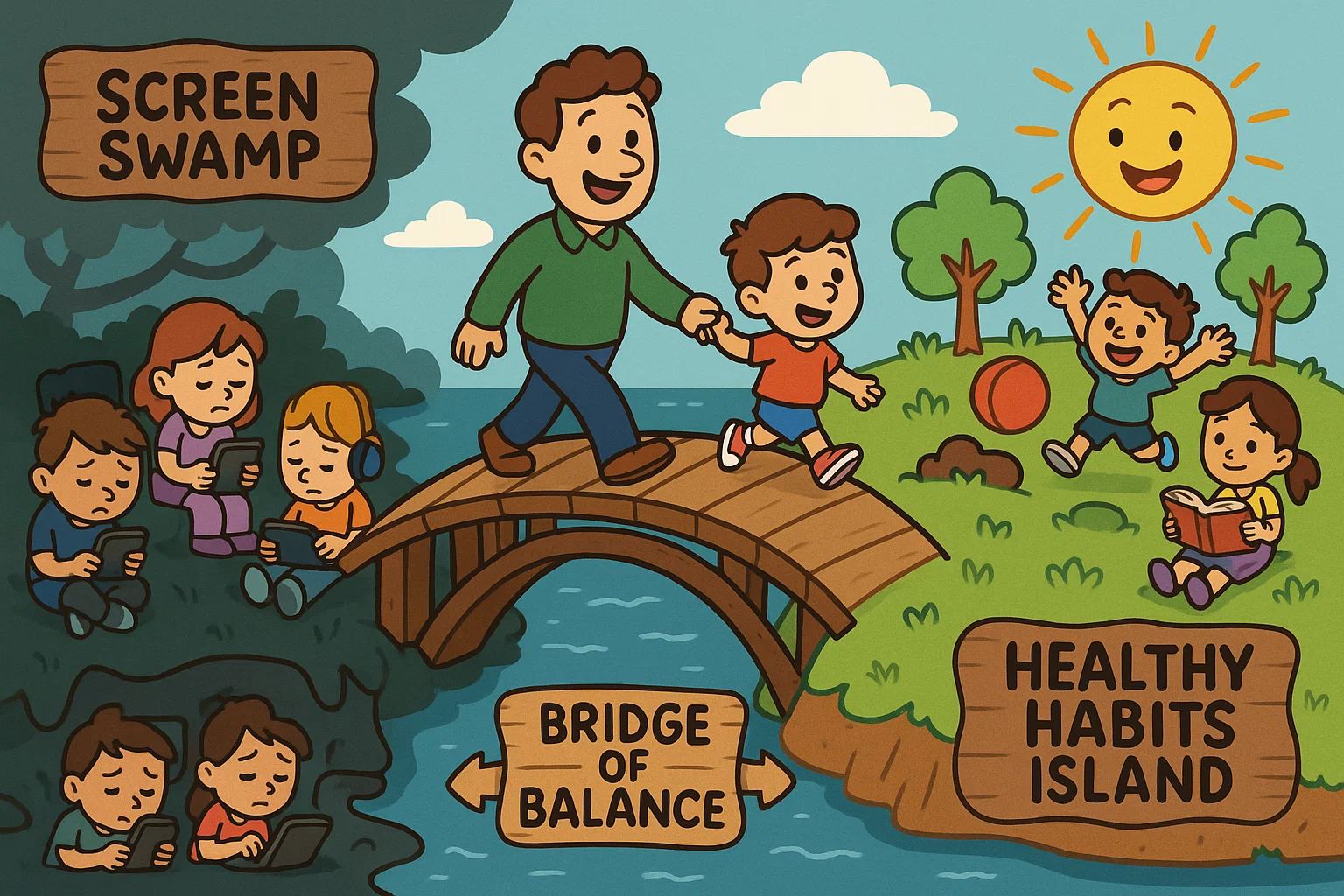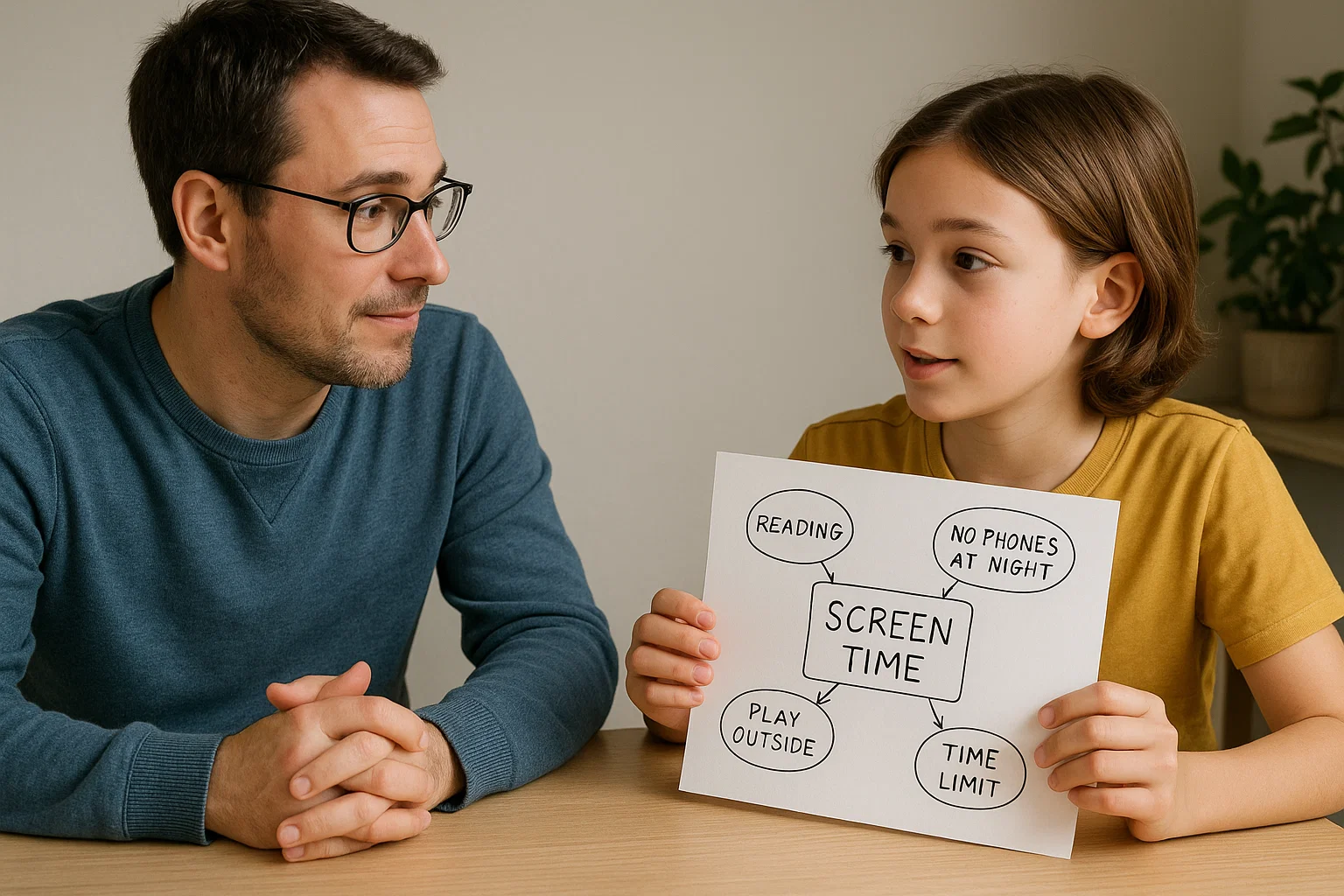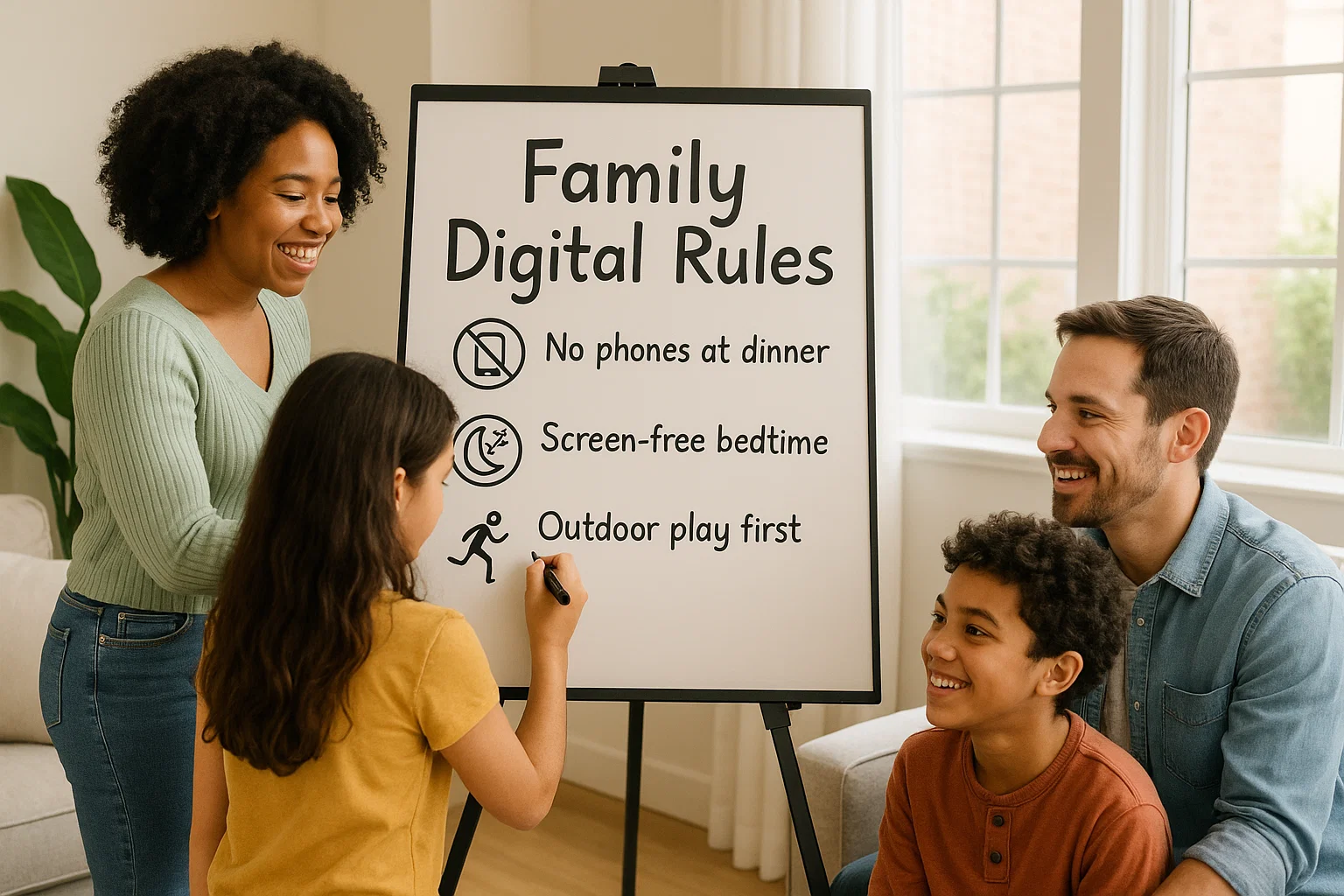Creating Healthy Digital Habits: A Parent’s Guide to Screen Time and Well-Being

Managing your child’s screen time has become a central part of modern parenting. The conversation around digital media is often filled with anxiety, but it doesn’t have to be. The goal isn’t to eliminate technology but to foster a balanced and mindful relationship with technology. When we build healthy habits, we empower our children to navigate the digital world confidently and safely.
This guide provides practical tips and strategies to move beyond conflicts over the screen and toward creating a family culture of digital wellness. By focusing on how to use technology intentionally, we can support our children’s mental health and overall well-being in the digital age.
Why Healthy Digital Habits Matter Today More Than Ever
Unstructured technology use can pose a real risk to a child’s development. Excessive or low-quality screen time has been linked to challenges with mental health, including feelings of isolation and anxiety, particularly for teens and adolescents. The constant lure of social media and the endless scroll can impact focus and self-esteem.
Furthermore, a child’s physical health can be affected. The blue light emitted from screens can disrupt the body’s production of melatonin, a hormone that regulates sleep, leading to poor sleep quality. Establishing healthy tech habits is about more than just setting time limits; it’s a proactive strategy to protect and enhance your child’s physical well-being and emotional resilience.
15 Ways to Build Healthy Digital Habits for Kids

Creating a healthier lifestyle in the digital age requires intention and consistency. Here are our top tips to help your children develop a balanced approach to their device use.
Differentiate Between Active and Passive Screen Time
Discuss with your children that not all screen time is equal. Passive consumption, like watching videos, is different from active engagement, such as creating digital art, coding a game, or video-chatting with family. This helps them understand that the quality of their screen usage matters as much as the quantity.
Encourage Offline Hobbies and Interests
A rich life filled with offline activities is the best counterbalance to excessive screen use. Help your child discover a hobby they love, whether it’s sports, music, art, or reading. A strong foundation in offline interests makes a digital detox feel less like a punishment and more like an opportunity for other kinds of fun.
Establish Consistent Routines and Family Agreements

Children thrive on predictability. Integrate technology use into the family’s daily routine with clear expectations. A family media plan that outlines when and where devices can be used helps prevent daily negotiations and power struggles.
Be a Mindful Role Model
Your habit is the most powerful teacher. Demonstrate balanced technology use by putting your own phone away during conversations, at meals, and during family time. Being a mindful role model shows your children that you value face-to-face connection over digital distraction.
Set Clear Digital Boundaries and Tech-Free Zones
Establish firm rules about where devices are not allowed. Common tech-free zones include the dinner table and bedrooms. This boundary ensures that family meals are for connection and that bedrooms are restful sanctuaries, free from the temptation of a glowing screen.
Use Parental Controls and Privacy Settings
Ensuring online safety is paramount. Use the built-in parental controls on each device and app to filter inappropriate content and manage privacy settings. This isn’t about spying; it’s about creating a safe online environment for your child to explore.
Limit Device Use Before Bedtime
Make it a household rule that all screens are turned off at least an hour before bedtime. This reduces exposure to stimulating content and disruptive blue light, significantly improving sleep quality and contributing to better overall well-being.
Teach Digital Responsibility
As children get older, teach them how to be responsible digital citizens. This includes organizing their digital files, creating strong and secure passwords, and understanding the importance of digital privacy.
Schedule Regular Digital Detoxes
Plan regular device-free periods for the whole family. A weekend afternoon spent on a hike or a game night without any screens can reconnect your family and reduce dependence on digital devices.
Encourage Respectful Online Communication
Teach your child that the same rules of kindness and respect apply to their online and offline interactions. This includes practicing good digital etiquette, thinking before they post, and always asking for permission before sharing photos or information about others.
Co-View and Co-Play with Your Children

Engage with the digital media your child enjoys. Watching a show with them, playing a video game together, or exploring a new app turns isolated screen time into a bonding and learning opportunity. It also gives you insight into what they are consuming.
Track and Limit Screen Time Transparently
Use built-in device features or a family app to set and monitor screen time limits. Discuss these limits with your child, explaining that the goal is to create balance and protect their wellbeing, not to punish them.
Create a “Digital Agreement” as a Family
Sit down together and create a written family media agreement. This document should outline the rules, expectations, and consequences for media use. When children are involved in creating the rules, they are more likely to understand and respect them.
Share and Reflect on Your Own Digital Habits
Be open about your own struggles and successes with technology. You might say, “I noticed I was checking my smartphone too much today, so I’m going to put it in another room to improve my productivity.” This vulnerability makes fostering healthy habits a team effort.
Promote Active Engagement During Screen Time
Even during entertainment time, encourage active viewing. Ask questions about the show they’re watching, connect it to real-world topics, and challenge them to think critically about the content they spend online consuming.
Creating a Family Media Plan That Works

A successful approach to discipline in the digital age is proactive, not reactive. A family media plan is your roadmap.
Setting Clear Boundaries and Tech-Free Zones
Your family’s digital boundary is a cornerstone of healthy habits. The most effective tech-free zones are the dining table, which preserves family connection, and bedrooms, which protect sleep. Consistently enforcing these rules helps them become a natural part of your daily life.
The Power of Being a Mindful Role Model
Children learn more from what you do than what you say. If you mindlessly scroll through social media during family time, they will see that behavior as normal. By modeling a healthier relationship with your own digital technology, you provide a powerful example of what balanced usage looks like.
The Goal of Effective Discipline: Using Positive Strategies to Reinforce Good Behavior
Ultimately, our goal is to reinforce good behavior and equip our children with the skills to manage their own digital lives responsibly. The most effective discipline is rooted in connection and communication, not control. These positive discipline techniques are not about creating a power struggle but about working together.
By using these healthy discipline strategies, you can guide your child toward becoming a thoughtful, responsible digital citizen who understands how to use technology to enhance their life, not detract from it.
How much screen time is appropriate for my 5-year-old?
The American Academy of Pediatrics recommends limiting screen time to one hour per day for children ages 2-5, focusing on high-quality educational content you watch together.
What should I do if my child has a meltdown when screen time ends?
Meltdowns are normal. Stay calm, acknowledge their feelings, and redirect them. Consistency in enforcing screen limits helps reduce these reactions.
Is educational screen time different from entertainment screen time?
Yes, educational content encouraging interaction and learning can be more beneficial than passive screen time for entertainment, though both count toward daily limits for young children.
How can I reduce my own screen time to model healthy habits?
Start by creating your own tech-free zones and times. Put devices away during family time, meals, and activities, and avoid using screens when your children are trying to interact with you.
What if my child needs to use screens for homework?
Educational screen time for homework is necessary and generally doesn’t count toward entertainment limits. Help your child distinguish between the two and create a distraction-free homework environment.
How do I handle screen time when my child visits friends or relatives with different rules?
Communicate your family’s media use guidelines to other caregivers, and prepare your child for situations where rules might be different. Use these as opportunities to discuss flexibility and adaptation for digital balance.
When should I introduce my child to social media?
Most experts recommend waiting until at least age 13 (the minimum age for most platforms) and ensuring your child has developed strong digital literacy and emotional regulation before introducing social media.
How can I tell if my child is developing a screen addiction?
Warning signs include inability to stop using devices, extreme distress when separated from screens, neglecting other activities, and physical symptoms. Consult your pediatrician if concerned about bad for kids tech habits.
